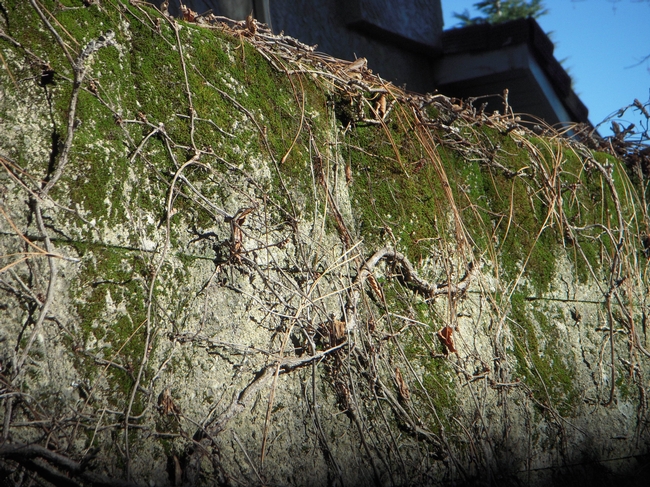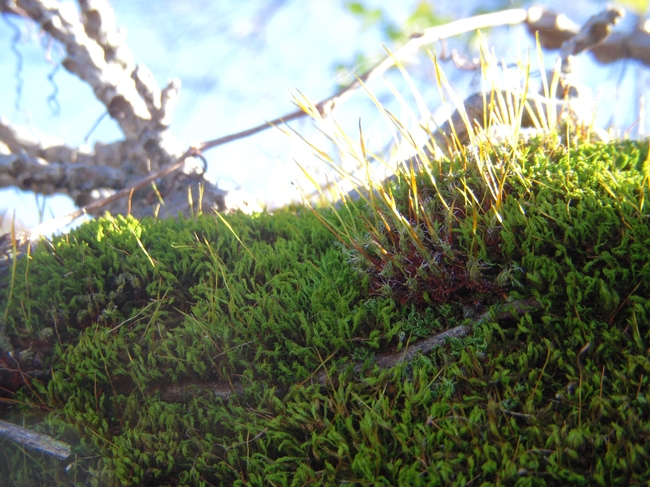Mostly Moss
During dog walks this time of year I enjoy the new sprouts of spring—daffodils peeking through earth and new leaves unfurling on trees. The other day, while pausing beside a retaining wall, I searched the barren vine that stretches across the concrete blocks for hints of green. But the only green I saw was moss (Bryophyta division).
Moss? Who pays attention to moss? I don’t. Yet moss is rather an intricate and intriguing plant.
With about 12,000 species in the Bryophyta division, I won’t garner a guess about the specific moss attached to the retaining wall. What I did learn from my research is that moss stems vary form simple to branched, upright or prostrate. The plant features simple leaves, rhizoids instead of roots, and lacks water-bearing xylem. Without seeds or flowers, moss reproduces through spores carried by the wind.
Mosses generally prefer dampness and shade but some species adapt to dry sunny areas such as alpine environments. While Japanese gardening elevates the cultivation of moss to an art form, such as soil cover in a bonsai pot, a clump of moss growing in a grass lawn is usually discouraged and considered a weed.
Bryophyta do have an upside. Moss is a source of nesting material for birds and mammals. Also, moss provides habitat and food for invertebrates and vertebrates. And let’s face it, when the only green you see on a retaining wall is mostly moss, it’s another welcome sign for spring.

moss5

Photos by Launa Herrmann

